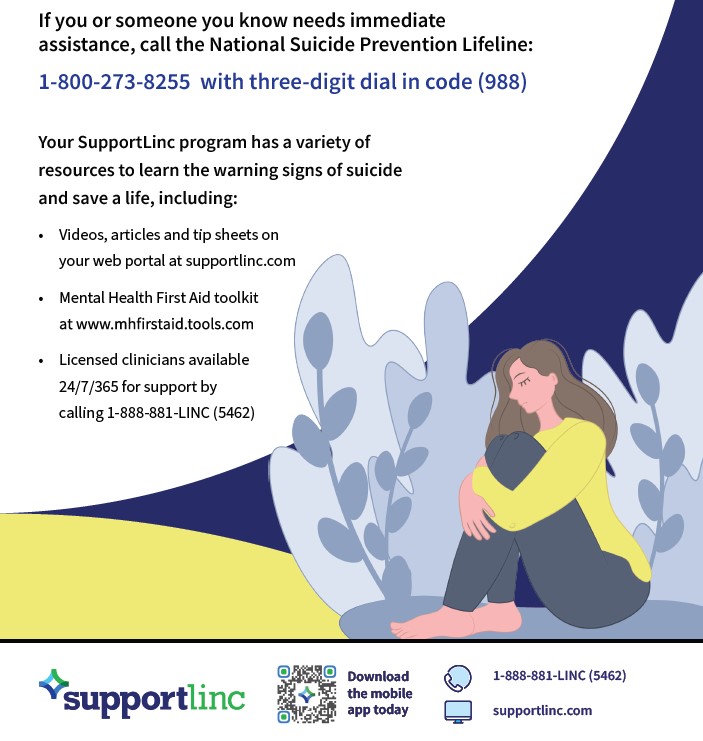
AVAILABLE TO YOU AND YOUR ELIGIBLE FAMILY MEMBERS 24/7/365
Whether you choose change, or it simply happens, change is a natural part of life and important to individual growth. You might experience a new job, a different living situation or shifting social groups, but navigating change successfully can be a similar process for any situation. Change can be difficult sometimes, but the way you approach it can reduce your stress and anxiety as well as help you bounce back quicker and stronger.
Recognize signs of change
Career changes, growing families, aging or unexpected circumstances can trigger feelings similar to the grieving process. Sadness, excitement, joy, anxiety and even anger are typical emotions that you may feel during periods of change. The more you understand why and how changes affect you, the more easily you will be able to handle changes when you encounter them.
Stay flexible
Resisting change only makes it harder. Being open to adapting helps you avoid some of the stress associated with transitions. Ask yourself, “What am I going to lose if I don’t change?” and “How can I make this work?” What skills do you have that you can apply to the new situation or environment? Expressing curiosity, asking questions and exploring new methods of problem solving can help you be more comfortable with changes.
Practice resiliency
The people that are best able to deal with change in their lives believe in their ability to adapt. Resiliency is about “bouncing back” from life’s challenges, and the ability to adjust to situations around you, especially in the face of adversity, trauma, tragedy, threats or stress. It’s recognizing that your strengths can help you endure and that you have the capability to approach life’s challenges head-on.
Stick to a routine
When facing the unknown, it’s important to try maintaining a sense of normalcy. For example, when facing changes in the workplace, try focusing on your usual workday routine. Can you still have lunch with a coworker or take your break at the same time each day? Sticking to your daily routines, wherever possible, can help ease the stress and tension you may be feeling during changes and provide a sense of comfort.
Change your perspective
Perspective is the window through which you view life, situations and other people. Even amid challenging times, keeping an optimistic viewpoint is possible and can help you move forward. To change the way you are looking at things, you need to change your emotional and mental inputs. Find sources of positive influence such as books, blogs and podcasts that help you to see the whole picture and find the good in change.
While changes might not always be welcome, they are an important part of personal growth. Take a new perspective and tackle change with a positive mindset, but don’t hesitate to reach out for support if you need it!


